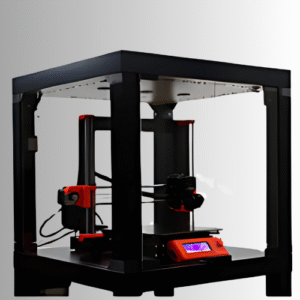
Since its inception, surveying has been all about precision. Whether the purpose is land development, construction, or agriculture, the success of every project rests on accurate measurements. Over the last few years, drones have transformed the methods we use to capture data from the sky. They generate high-resolution images, perform rapidly, and reach into challenging areas. Nonetheless, the most sophisticated drone platforms still need assistance in reaching survey-grade precision. That’s the role of ground-based control methods.
What Are GCPs and Why Do They Matter?
Ground control points (GCPs) represent concrete markers established on the Earth’s surface. Surveyors use conventional instruments— GPS or total stations, for example—to develop their precise coordinates. When capturing aerial imagery, drones and mapping programs rely on these points as guidelines. In turn, these points guarantee that the captured images align precisely with their real-world counterparts. GCPs function as reference points; firms rely on them to keep their data aligned so it doesn’t wander, distort, or diminish in accuracy.
The Science Behind the Process
Photogrammetry—the procedure of composing aerial images into maps—demands precise positioning. An insignificant misalignment can introduce considerable errors into measurements. GCPs are employed to rectify such errors. As a consequence, the resulting accuracy improves both horizontally and vertically.
When Precision Really Counts
Some projects call for pinpoint accuracy. In the construction industry, even the slightest measurement mistakes may cause delivery delays or result in foundations being set off target. Within the mining sector, very accurate volume estimates hinge on dependable elevation data. Surveyors frequently encounter legal or safety regulations that call for data of professional quality. Within these scenarios, relying exclusively on drone GPS is hazardous. Even the most advanced hardware is vulnerable to mistakes brought on by signal attenuation, interference, or drift. By deploying GCPs, an additional layer of confirmation is ensured.
How GCPs Fit into the Workflow
The aerial mapping GCPs are not very hard to use; the only difficulty is that one has to plan them. To begin with, surveyors spread a few labelled dots on the examined location. These have to be aerial and ought to be located in an even manner. Then, they note the coordinates in the survey-grade equipment. Mapping software georeferenced the whole dataset and corrected it by the location of these points, made after the flight of a drone. The outcome is a map that is much more aligned with the real world.
Balancing Time, Effort, and Results
The limitation to the use of GCPs by some drone operators is the time it takes to set up. It is also true that GCPs are inconvenient to place and record. However, by avoiding them, a larger problem may crop up in the future. Bad data can necessitate re-flights or corrections in the field. Even worse, it may cause conflicts, delays, or financial losses. The additional work can be justified when it comes to teams, which require constant, effective results.
RTK and PPK: Are GCPs Still Needed?
More accurate GPS is available in real-time Kinematic (RTK) and Post-Processed Kinematic (PPK) drones. These systems usually come close to GCPs’ accuracy. There are certain cases when they may decrease the necessity of full ground control. Nevertheless, many specialists prefer to work with combined systems. RTK is convenient, whereas GCPs are for verification. When projects are critical, GCPs are still the standard to go to when it comes to ensuring accuracy.
Common Mistakes to Avoid
Weak placements of GCPs may have negative results instead of benefits. The markers reserved should not be stacked in the same location and should have a barrier that is too close to the site. The quality of the GCP marker also counts. It has to be big, high contrast, and readable from drone altitude. It also causes inaccurate data recording, the wrong coordinates, or skipping the survey process. These problems are avoided by proper training and quality control.
Most Benefiting Industries
In order to facilitate construction, infrastructure planning, and proper land surveying, detailed and accurate maps are often required. GCPs play a key role in these industries. Agriculture and environmental monitoring can also benefit when the level-to-level changes need to be compared or when detailed reports are to be prepared. GCPs are used in real estate development, where they assist in the production of maps that facilitate zoning, permitting, and planning. Aerial mapping GCPs can give confidence whenever there is a need to subject data to inspection.
Looking Ahead: A Blended Approach
On the one hand, technology keeps getting better, and drone systems are becoming smarter each year. Professionals are discovering that the most effective results can be achieved by combining drone automation with manual validation. GCPs do not restrict you in any way—instead, they are a safety net that increases precision and trust.
Final Thoughts: Accuracy You Can Build On
Drones will expedite surveying and make the process more available. But it is nothing to be fast without being correct. Ground control ensures that the picture you get in the air is what is on the ground. Data integrity is important, whether in construction site planning or in analyzing farmlands. Combining drone imaging with properly located control points speaks volumes.






